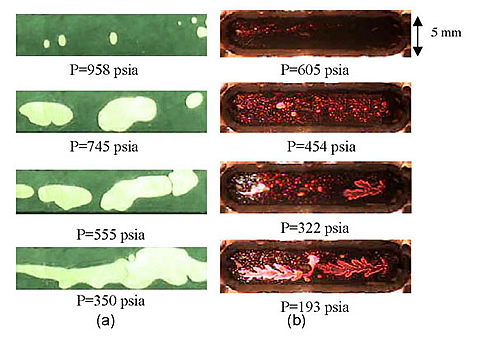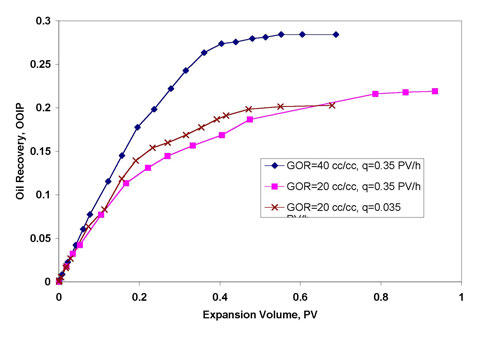The United States relies more extensively on imported oil year by year. Yet the current situation has emerged not because the America lacks substantial oil and gas resources. Rather, we have not been successful at developing cost-effective production techniques that allow us to convert known resources into reserves. A case in point is heavy oil. Estimates place the total heavy oil resource (less than 20° API gravity) in the United States at 200 billion barrels of oil. At current consumption rates, this resource represents about 45 years of total oil supply for the United States. It is also noteworthy that the total amount of all heavy hydrocarbon resources in the Western Hemisphere (including heavy oil, tar sands, and oil shale) is well in excess of 5.5 trillion barrels. The oil resource of the Middle East is estimated as 1.4 trillion barrels.
The chief problem with heavy oil is economic exploitation of the resource. Heavy oils are thick and viscous, resulting in low-productivity wells. Thermal recovery, and steam injection in particular, is tremendously successful because heat thins heavy oils. Nevertheless, conventional steam injection candidates are limited to onshore, relatively shallow, thick, permeable, and homogeneous sands where benign surface conditions exist. A suite of heavy oil recovery methods is needed to address recovery across the broad range of heavy oil viscosity.
Results
Results to date include the following:
- A review of the knowledge base with respect to thermal well completions found that significant technology is available for development in cold environments.
- The development and validation of a semianalytical model for cyclic steaming in horizontal wells.
- An understanding of the role that hydraulically fractured wells might play in thermal recovery processes.
- Experiments that analyze foam generation mechanisms in micromodels reinforce prior work that asserted “snap off” as a dominant foam generation mechanism.
- Chemical analysis of heavy and viscous oils displays considerable variation in acid and base numbers. These differences appear to be indicators of oils that present favorable recovery characteristics by heavy oil solution gas drive.
Benefits
This research will increase the utilization of heavy oil resources and significantly improve recovery efficiency. The project seeks to show how the maximum volume of heavy oil is recovered without the addition of heat to the reservoir. This will reduce, and in some cases eliminate, the total amount of heat needed for EOR, resulting in significant cost savings and environmental benefits. An additional benefit to industry is that the mechanism for academia-industry interaction is active and involves regular exchange of ideas through meetings, advance copies of papers and reports, and informal contact. This significantly reduces the cycle time between research idea, research result, and assimilation of results by industry into its workflow.
Summary
The primary project tasks center on the areas of cold production and thermal recovery.
The objective of the cold production task is to develop a conceptual model for heavy oil solution gas drive and to translate this conceptual model into a numerical model. Experiments will be conducted using representative crude oils in sands, undertaking physical measurements as well as model development to further the interpretation of experiments and to provide a means of scaling from laboratory to field conditions.
The objective of the thermal recovery task is to lay the technical foundations of successful thermal recovery processes for heavy oil in arctic or offshore conditions. Key components of this effort are cyclic steam injection and mobility control of steam using aqueous foams. The rationale is that when viewed solely from a reservoir perspective, thermal EOR—and most likely steam injection in particular—is clearly the preferred option. Heating reduces oil viscosity substantially, thereby improving flow rates and speeding ultimate recovery. The presence of permafrost to depths of roughly 2,000 feet, however, leads most to summarily discount thermal recovery for arctic conditions. This task makes a complete case for thermal oil recovery by considering everything from well completions through mobility control.





